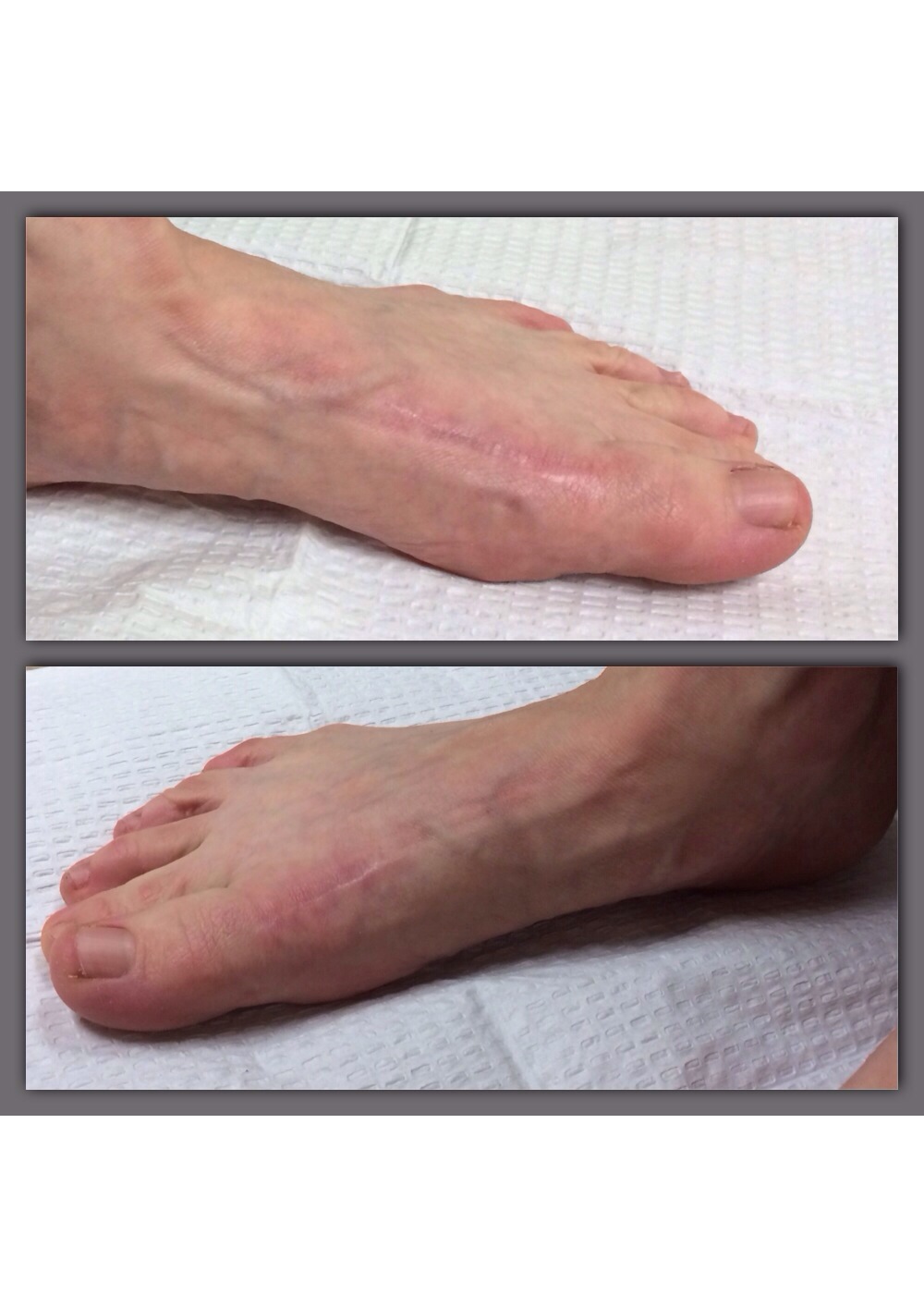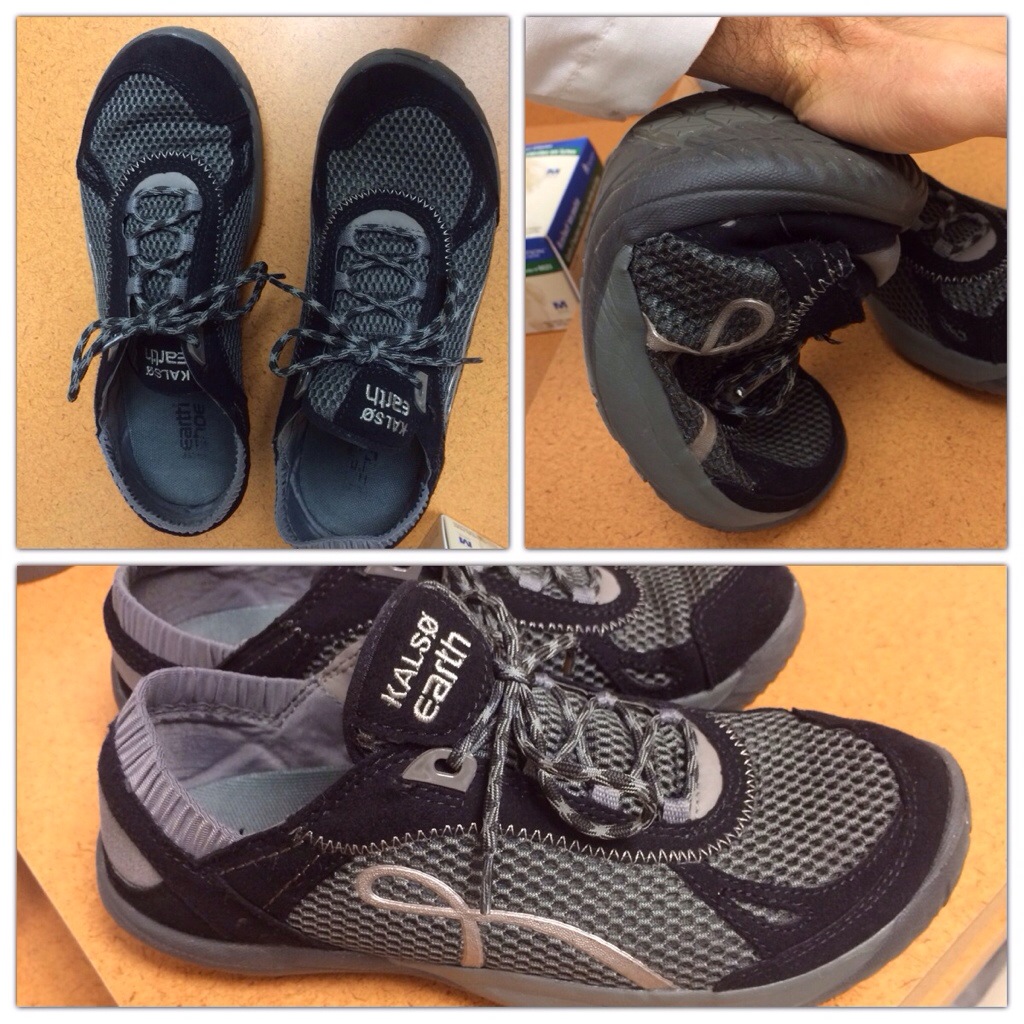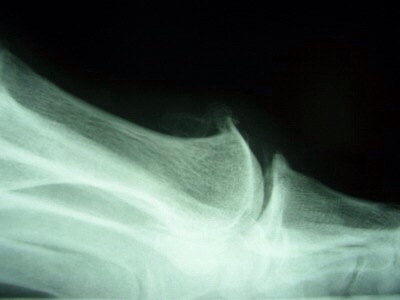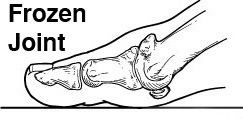Arthritis of the great toe – A condition know as Hallux Limitus.
Definitely this is by far the most common arthritis to occur in the foot and ankle. I see patients everyday with this aggravating condition which is called Hallux Limitus (decrease in motion of the great toe joint) or Hallux Rigidus (complete loss of motion of the great toe joint).
What causes Hallux limitus?
There are multiple reasons for arthritis to occur in the great toe joint. Any trauma to the joint can cause fragmentation of the bone and/or cartilage leading to continued irritation which worsens over time- typically years depending on the severity of the arthritis. It can certainly be hereditary. So if mom or dad had it, you may be more likely to get it. Shoe gear has the biggest influence on this process which takes years to see the negative effects. Continued wearing of narrow shoes (specifically the toe box) combined with any heel height (yes ladies, even the really low ones) will place abnormal force on the great toe creating faulty mechanics which results in the wearing out of the joint. So even though you may not be feeling it, the damage is occurring.
Treatment
I try to make this simple for my patients. It’s like having sand in ball bearings of a wheel. The longer you run the car and spin the wheel, the more damage you’ll do to the bearings. In this case, your big toe joint is the bearings.
Here are the options (and they vary depending upon the severity of the joint damage):
Injection: This can reduce the inflammation that is present in the joint capsule. How long it will lasts depends on the how much cartilage is eroded and how much spurring there is on the head of the metatarsal bone.
Surgery: There are multiple options for surgery.
Cheilectomy– this is simply cleaning up the joint and buying time until something more needs done to the joint. Many times if caught early enough this can fix the damage and prevent future damage.
Joint implant– part of the joint can be replaced by implanting a titanium or stainless steel implant. Only the base of the proximal phalanx gets replaced and this can be a great option for a severely damaged joint. You can still be active and run with this procedure.
Fusion of the joint – when damage is severe, and there is no further motion to the joint, fusing the joint will prevent pain. It’s the grinding motion that creates the pain.
Choosing the procedure is a process that requires extensive discussion with your physician to choose the right procedure for you given your lifestyle and goal.
Here’s an example of a female patient who had both great toe joints fused several years ago (by another physician) and was experiencing severe pain to her forefoot and ball of her foot.

She came to me wearing structured cushioned running shoes as well as OTC orthotics and wanted to be fitted for custom orthotics. I explained that this would be an expensive option for her and being that her condition was not a problem where she needed to have motion controlled in her rearfoot or arch.
I advised her to try a flat shoe and learn to take shorter strides and learn to change her gait to a more natural one. The idea is to avoid pressure to the forefoot that occurs with long strides combined with shoes with a higher heel.
She chose an Earth Shoe which is actually a negative drop shoe meaning the heel is sitting lower then the forefoot.

This can be considered a minimalist shoe but I really don’t like to focus on placing shoes into categories. I try to get the patient to understand that they need to find a shoe that will let their foot function in a normal and natural manner. By transitioning to a shoe of this nature took the pressure off of her forefoot and allowed her to begin walking more efficiently. She returned to my office extremely excited that all it took was to get into a more flat and flexible shoe to improve her pain.









Dr Nick what are your thoughts on the Hoka Oneone Stinson for runners with arthritic big toe?
I run with Hokas for my toe, although after reading it sounds like minimalist might be ok with a shorter stride and higher turnover rate
Dr.Nick,
What I understand from your blog about Halluks Limitus or Rigidus , as a runner we should be using zero drop running shoes (like Hoka or Altra or Kalso Earth) instead of 8mm drop shoes like (newton Brooks or Saucony) . I have been using the latters for a year and having a lot of toe or knee issues during running ?
regards
My husband has arthritis in his big toe. When wearing his obeo sneakers while driving, it is painful to accelerate and brake. Are there sandals and sneakers that would relieve this pain? His sandals, being hard soles, are less painful when wearing them to drive. Jeanne Ramsden jeanneramsden1108@gmail.com
Thank you.